Fun Fact, Hammering Metal Spikes Into Tree Trunks Is A Federal Crime In The US Because Environmental
Fun fact, hammering metal spikes into tree trunks is a federal crime in the US because environmental activists used to do it in the 80s to fuck up chainsaws and logging equipment.
More Posts from Copperfingertips and Others
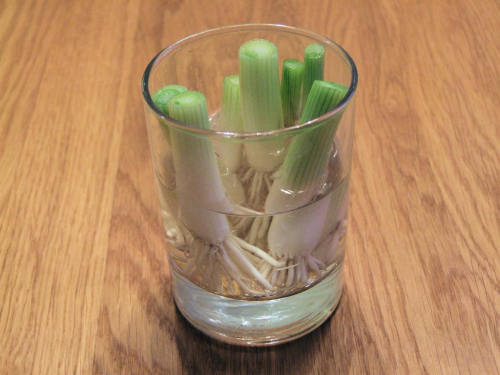
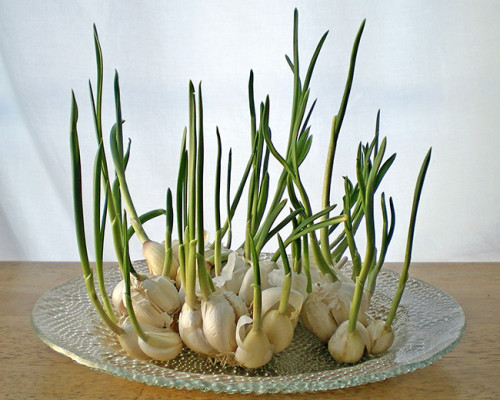


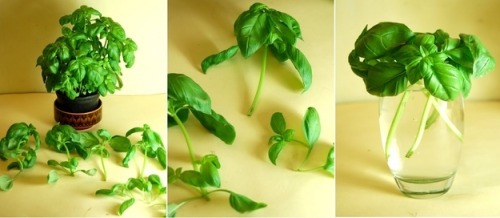

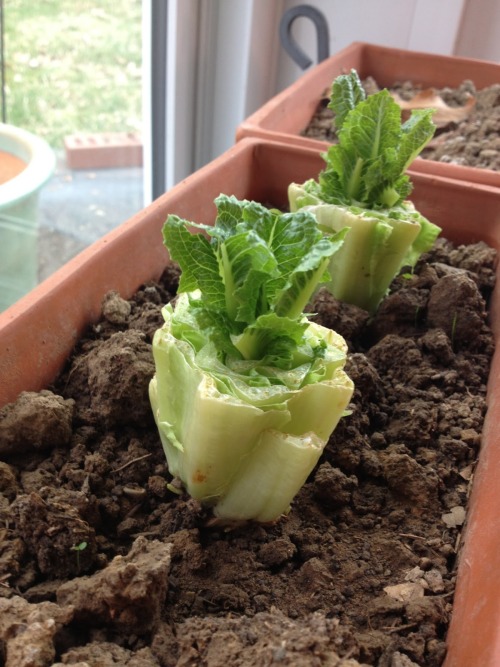
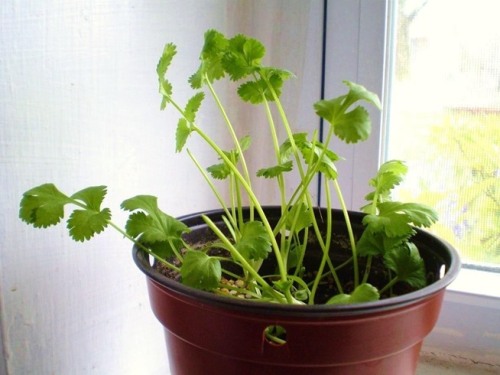
8 vegetables that you can regrow again and again.
Scallions
You can regrow scallions by leaving an inch attached to the roots and place them in a small glass with a little water in a well-lit room.
Garlic
When garlic begins to sprout, you can put them in a glass with a little water and grow garlic sprouts. The sprouts have a mild flavor than garlic and can be added to salads, pasta and other dishes.
Bok Choy
Bok choy can be regrown by placing the root end in water in a well-lit area. In 1-2 weeks , you can transplant it to a pot with soil and grow a full new head.
Carrots
Put carrot tops in a dish with a little water. Set the dish in a well-lit room or a window sill. You’ll have carrot tops to use in salads.
Basil
Put clippings from basil with 3 to 4-inch stems in a glass of water and place it in direct sunlight. When the roots are about 2 inches long, plant them in pots to and in time it will grow a full basil plant.
Celery
Cut off the base of the celery and place it in a saucer or shallow bowl of warm water in the sun. Leaves will begin to thicken and grow in the middle of the base, then transfer the celery to soil.
Romaine Lettuce
Put romaine lettuce stumps in a ½ inch of water. Re-water to keep water level at ½ inch. After a few days, roots and new leaves will appear and you can transplant it into soil.
Cilantro
The stems of cilantro will grown when placed in a glass of water. Once the roots are long enough, plant them in a pot in a well-lit room. You will have a full plant in a few months.

Not Herbalism but Baker Creek Heirloom Seeds just put out their 2019 Catalog. It’s time to plan gardens now, so that when spring comes, you can execute that plan. I have lived in apartments with very little space for the past 7 years, so I thought I’d share my “grows well in containers list” with you guys.
Greens: Most greens, spinach, arugula, lettuces, some cabbages, etc. will grow in a container quite well.
Herbs: Similar to above, you can get your typical herbs to grow in pots quite well, usually. The yield with herbs is always very good too.
Anything with “Tom Thumb” or “Dwarf” in front of it: These are varieties made for containers, basically. They’re very, very small. There’s peas, corn (as in pop corn), tomatoes. Lots of stuff. Even flowers.
Cheery Tomatoes: In general, with any “regular” veg, you’ll probably need a larger pot (Think like 1 gal). If you’re willing to go the distance, though, cherry tomatoes are a great container plant, in my opinion.
Alpine Strawberries: Again, somewhat larger (though not as large as above) is recommended to get more berries. These guys are tiny strawberries. Like one bite berries.
Banana Peppers: I had two plants. They went wild. I ended up with several fresh peppers mixed into stir fry all summer and then two large canned jars of them, which I munched on through fall to the very very beginning of winter.
Carrots: Actually, if you’ve got a tall enough pot, you can grow regular carrots. But I like the Parisienne or other little round globe varieties.
Radishes: Similar concept to the carrots. Small, round. Remember to eat your radish and carrot greens as well.
Green onions: Either a chive situation or, some companies do actually have very small, like golf ball sized onions.
Look for “container mixes” on seed sites: Quite a few seed sights often put together container seed mixes. They’re usually the varieties recommended by the company.
So that’s my list. Remember, grow what you want to eat. Also, a good plan is grow what is hard for you to buy. That way you aren’t doubling down on what you can easily find in town.
Humans delayed the onset of the Sahara desert by 500 years

Humans did not accelerate the decline of the ‘Green Sahara’ and may have managed to hold back the onset of the Sahara desert by around 500 years, according to new research led by UCL.
The study by a team of geographers and archaeologists from UCL and King’s College London, published in Nature Communications, suggests that early pastoralists in North Africa combined detailed knowledge of the environment with newly domesticated species to deal with the long-term drying trend.
It is thought that early pastoralists in North Africa developed intricate ways to efficiently manage sparse vegetation and relatively dry and low fertility soils.
Dr. Chris Brierley (UCL Geography), lead author, said: “The possibility that humans could have had a stabilizing influence on the environment has significant implications. We contest the common narrative that past human-environment interactions must always be one of over-exploitation and degradation. Read more.
How big is solarpunk?
If you consider yourself a follower of the solarpunk movement, or even just have a casual interest in the subgenre, please reblog this post! I’m trying to gauge the size of the current solarpunk ‘fandom’ on tumblr. If there’s sufficient interest, I might even look into creating a network or group of some kind so that like-minded solarphiles can share ideas, headcanons and projects. Oh, and I’ll be following back predominately solarpunk blogs, so there’s something tangible in it for you too. Thanks in advance!


~ the pondering muse🌙
Where have all the bugs gone? That’s what this post tries to answer and if you’re like me and hadn’t really noticed the lack of bugs recently, you’ll understand why this is such a big deal after reading the article. However, before we dive into this article, I want to share with you what I’ve noticed.
I’ve lived in Missouri for almost 19 years now, about a decade ago I remember windshields so full of bug splats that you couldn’t see out of it while driving down the highway and cringing at the *thump* of especially large bugs when they hit. I remember a season where when I rode my bike around town I couldn’t not hit a grasshopper because there were more than I could count all over the roads and fields. Last summer however? I remember pulling a single butterfly from the grill of my dad’s truck. That’s it… There were no more bugs. …
Here’s how plentiful our world used to be. We tend to think that the environmental conditions that we are born into are normal, but it is anything but normal.
“In “The Once and Future World,” the journalist J.B. MacKinnon cites records from recent centuries that hint at what has only just been lost: “In the North Atlantic, a school of cod stalls a tall ship in midocean; off Sydney, Australia, a ship’s captain sails from noon until sunset through pods of sperm whales as far as the eye can see. … Pacific pioneers complain to the authorities that splashing salmon threaten to swamp their canoes.” There were reports of lions in the south of France, walruses at the mouth of the Thames, flocks of birds that took three days to fly overhead, as many as 100 blue whales in the Southern Ocean for every one that’s there now. “These are not sights from some ancient age of fire and ice,” MacKinnon writes. “We are talking about things seen by human eyes, recalled in human memory.”“
So, when you read the above article, please understand how dire these circumstances are for us and our planet. Ok, so what are the highlights of the article?
“A 2013 paper in Nature, which modeled both natural and computer-generated food webs, suggested that a loss of even 30 percent of a species’ abundance can be so destabilizing that other species start going fully, numerically extinct — in fact, 80 percent of the time it was a secondarily affected creature that was the first to disappear.”
- Drastic drops in insect populations have been recorded globally.
- World’s largest king penguin colony shrank by 88%.
- Blue-fin Tuna populations have shrunk 97%.
- 60% decrease in total wild land animal populations.
- 96% of the planet’s biomass now is humans and livestock. Wild animals represent less than 4%. …
- 10-60% less arthropod biomass in Puerto Rico.
- 50-80% drops in partridges from France due to the lack of insects they eat.
- 50% of all farmland birds in Europe are gone.
- Birds which rely on insects may be starving to death due to their collapse.
These are some drastic decreases and we tend to forget that all species are connected. When we loose one species, we can loose all the species that rely on it. We need to recognize what is happening around us with our environment and our planet. We need to know, that what we are seeing today, isn’t normal.
adults are always talking about how “kids will do anything to get out of school” and okay, first of all that’s not true, but I think we really need to ask why that idea holds so much sway.
children’s brains are hard-wired to take in new information and acquire new skills. consider, for a moment, just how thoroughly our society had to fuck up the concept of education for it to be a normal thing to assume kids are universally desperate to avoid learning.

Words to live by, brought to you from the local Bellevue Nursery.
Tiny Houses in Urban Context
I’ve seen a lot of really great tiny home designs, and I’ve seen a lot of love from other people for those designs as well. They combine a small space, perfect for one or two people, that usually only apartment buildings design for, with the benefits of having a detached home, with a yard, and windows on all sides for more natural light.
What I don’t see is a whole lot of context, least of all in an urban neighborhood environment. These houses are often pictured in an open grassy, or forested space, which is nice for some people I’m sure, but there are lots of people who would prefer to live in a city, in pedestrian and transit friendly areas, rather than in the middle of nowhere, where you’d have to use a car to get everywhere.
There already exists an urban context for tiny homes, but due to restrictive zoning, it’s not commonplace in most cities in the U.S.
They’re called Bungalow Courts, or sometimes Cottage Courts, and basically it’s where you take two adjacent lots, and rather than having one large single-family-house per lot, you have around 3 or so tiny houses per lot, all facing a shared space in the center.

All this takes up the same space as two city lots, which are usually zoned to only allow one house per lot. But not everyone wants, or can afford a large house, so Bungalow Courts would be a perfect fit in a lot of neighborhoods that currently lack a lot of housing diversity for a range of wants and needs.



Anyway, I just thought I’d share, because I think this a really neat concept that should be allowed more places. I’d think I’d like to live in a Bungalow Court; I like the idea of having a house to myself, but I don’t need much space, and I don’t want a huge yard to maintain.
In order to make this legal to build out, zoning would need to be changed to allow 3-4 units of housing to be built on lots currently restricted to only 1 unit of housing. A big contributing factor to rising housing costs has been the over-favoring of single-family houses on large lots since the end of WWII, so not enough units of housing are being built in many cities to keep up with demand.
Legalizing more “missing middle housing” like Bungalow Courts in single-family-house-neighborhoods would help cities incrementally keep up with demand, in a way that fits nicely into existing neighborhoods.
-
 comraderaccoon liked this · 1 month ago
comraderaccoon liked this · 1 month ago -
 alcibiades-superiority liked this · 2 months ago
alcibiades-superiority liked this · 2 months ago -
 parkerfinn liked this · 2 months ago
parkerfinn liked this · 2 months ago -
 unubinary reblogged this · 2 months ago
unubinary reblogged this · 2 months ago -
 thetemperancecard reblogged this · 2 months ago
thetemperancecard reblogged this · 2 months ago -
 sortarapunzel liked this · 3 months ago
sortarapunzel liked this · 3 months ago -
 ariaverge reblogged this · 3 months ago
ariaverge reblogged this · 3 months ago -
 oliverite reblogged this · 3 months ago
oliverite reblogged this · 3 months ago -
 forestparabola liked this · 3 months ago
forestparabola liked this · 3 months ago -
 nostalgicfoxxosystem reblogged this · 3 months ago
nostalgicfoxxosystem reblogged this · 3 months ago -
 miami-man reblogged this · 3 months ago
miami-man reblogged this · 3 months ago -
 xellaneren liked this · 3 months ago
xellaneren liked this · 3 months ago -
 swimmingblue liked this · 3 months ago
swimmingblue liked this · 3 months ago -
 cricketandlace reblogged this · 3 months ago
cricketandlace reblogged this · 3 months ago -
 grub-for-worms liked this · 3 months ago
grub-for-worms liked this · 3 months ago -
 communist--on--main reblogged this · 3 months ago
communist--on--main reblogged this · 3 months ago -
 atiskamatis liked this · 3 months ago
atiskamatis liked this · 3 months ago -
 stained-glass-sphinx reblogged this · 3 months ago
stained-glass-sphinx reblogged this · 3 months ago -
 chocolatechipcookiesonaplate reblogged this · 3 months ago
chocolatechipcookiesonaplate reblogged this · 3 months ago -
 just-here-for-humor reblogged this · 3 months ago
just-here-for-humor reblogged this · 3 months ago -
 just-here-for-humor liked this · 3 months ago
just-here-for-humor liked this · 3 months ago -
 soap-with-bite-marks reblogged this · 3 months ago
soap-with-bite-marks reblogged this · 3 months ago -
 potyapeachy reblogged this · 3 months ago
potyapeachy reblogged this · 3 months ago -
 drivelikademon liked this · 3 months ago
drivelikademon liked this · 3 months ago -
 multi-fandom-shenanigans liked this · 3 months ago
multi-fandom-shenanigans liked this · 3 months ago -
 frogmuncher reblogged this · 3 months ago
frogmuncher reblogged this · 3 months ago -
 potyapeachy liked this · 3 months ago
potyapeachy liked this · 3 months ago -
 beastlybeauty reblogged this · 3 months ago
beastlybeauty reblogged this · 3 months ago -
 antimony-ore reblogged this · 3 months ago
antimony-ore reblogged this · 3 months ago -
 bluesweaters15 liked this · 3 months ago
bluesweaters15 liked this · 3 months ago -
 teaganisokey liked this · 3 months ago
teaganisokey liked this · 3 months ago -
 oppositeoftime liked this · 3 months ago
oppositeoftime liked this · 3 months ago -
 sandiwchirlinreal reblogged this · 3 months ago
sandiwchirlinreal reblogged this · 3 months ago -
 solvail liked this · 3 months ago
solvail liked this · 3 months ago -
 tedkazcynski liked this · 3 months ago
tedkazcynski liked this · 3 months ago -
 hobgobknowsbest reblogged this · 3 months ago
hobgobknowsbest reblogged this · 3 months ago -
 hobgobknowsbest liked this · 3 months ago
hobgobknowsbest liked this · 3 months ago -
 porceline liked this · 3 months ago
porceline liked this · 3 months ago -
 sylverfern liked this · 3 months ago
sylverfern liked this · 3 months ago -
 prairieparadox liked this · 3 months ago
prairieparadox liked this · 3 months ago -
 anactualdeadbody reblogged this · 3 months ago
anactualdeadbody reblogged this · 3 months ago -
 hardestwaypossible liked this · 3 months ago
hardestwaypossible liked this · 3 months ago -
 disability-multiplicity reblogged this · 3 months ago
disability-multiplicity reblogged this · 3 months ago -
 disability-multiplicity liked this · 3 months ago
disability-multiplicity liked this · 3 months ago -
 maybejustsomeguy reblogged this · 3 months ago
maybejustsomeguy reblogged this · 3 months ago -
 maybejustsomeguy liked this · 3 months ago
maybejustsomeguy liked this · 3 months ago -
 vexinglyvolatile reblogged this · 3 months ago
vexinglyvolatile reblogged this · 3 months ago